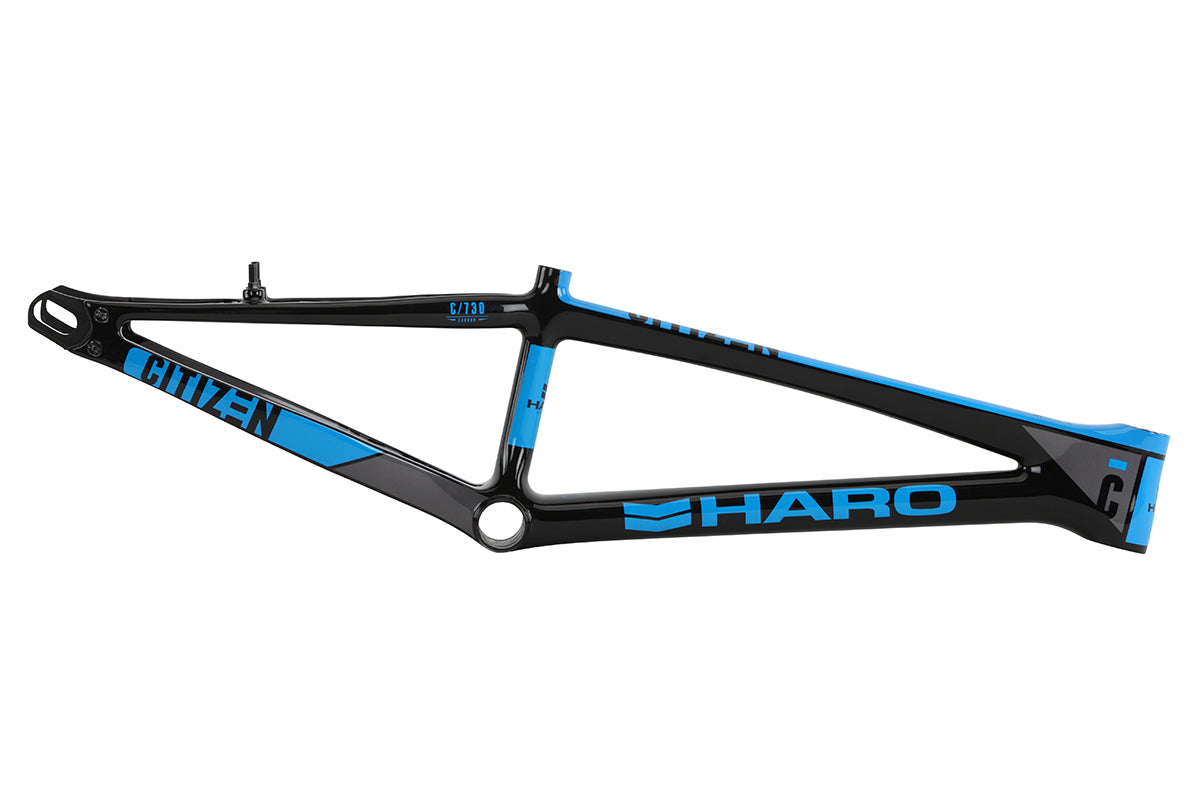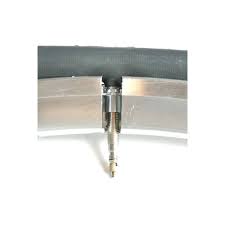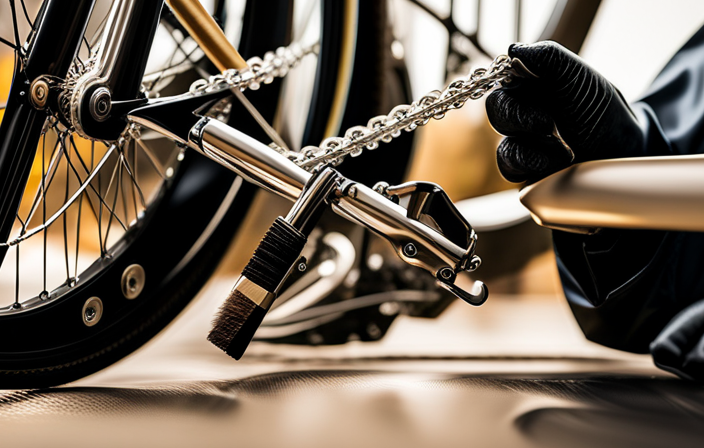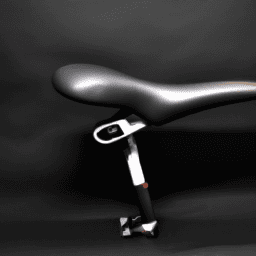If you’re in the market for a carbon fiber bike frame, the choices can seem overwhelming. You might be curious about which features are important and what kind of performance you can expect. This guide is designed to assist you in selecting the best option for your budget and riding preferences. Keep reading to discover the pros and cons of carbon fiber bicycles. Keep in mind, carbon isn’t an inexpensive material – it requires a certain amount of upkeep, but the investment will prove to be valuable over time.
Carbon Fiber Bike Frame Advantages and Disadvantages
Carbon Fiber Bike Frame Advantages
- Lightweight: Carbon fiber is lighter than most metals, which makes the bike frame lighter, making it easier to accelerate, climb hills, and ride for longer distances without getting tired.
- Stiffness: Carbon fiber is very stiff, which makes the bike frame more responsive and better at transferring power from the pedals to the wheels, resulting in a faster, more efficient ride.
- Durability: Carbon fiber is highly resistant to fatigue and can withstand impacts that would cause other materials to fail. Carbon fiber frames are also resistant to rust and corrosion, which can make them more durable in the long run.
- Customizable: Carbon fiber can be molded into complex shapes, allowing for a high degree of customization in bike frame design. This can result in a more aerodynamic, comfortable, and stylish bike.
Carbon Fiber Bike Frame Disadvantages
- Cost: Carbon fiber frames are generally more expensive than frames made from other materials, which can make them less accessible for cyclists on a budget.
- Repairability: Carbon fiber is difficult to repair, and in some cases, a damaged frame may need to be replaced rather than repaired. This can be costly and inconvenient.
- Stiffness: While stiffness can be an advantage, it can also be a disadvantage for some cyclists who prefer a more comfortable, forgiving ride. Carbon fiber frames can transmit more road vibrations to the rider, which can be uncomfortable on long rides or rough terrain.
- Susceptibility to impact damage: While carbon fiber is durable, it can be susceptible to impact damage, which can cause cracks or other structural damage. This can be a concern for cyclists who ride on rough terrain or in areas with heavy traffic.
Overall, a carbon fiber bike frame can offer many advantages for a cyclist who values performance and durability, but the higher cost and repairability issues may be a concern for some cyclists. It’s important to consider your individual needs and preferences when choosing a bike frame material.
Structure
When it comes to bicycle frame structure, carbon fiber has a distinct advantage. The continuous flow of fiber throughout the frame virtually eliminates fatigue issues. Furthermore, carbon fiber is more rigid than aluminum or steel, which makes it ideal for cycling. In addition, carbon fiber is lightweight, making it easier to manufacture a bicycle frame. However, there are some key design considerations when making a carbon fiber bicycle frame. Here are a few of the most important ones.
A carbon-fiber bike frame is similar to a traditional bicycle frame made of metal tubes. It uses the same basic design as a bonded aluminum bicycle, but replaces the metal tubing with carbon. Another benefit of carbon-fiber bikes is that the frame can be made with different size and angle variations. The difference in frame structure can greatly improve the ride quality of the bicycle. It is also more affordable than a traditional bike frame.
The structure of a carbon fiber bike frame is a complex one. It must withstand heavy pedaling forces while being lightweight and stiff. In addition to this, carbon fiber can absorb road shocks well and deliver pedal power without degradation. Furthermore, carbon fiber frames are durable, lightweight, and highly resistant to corrosion. It can also be shaped in an appealing way. This makes it a highly desirable material for bike frames. So, if you are interested in purchasing a carbon fiber bike frame, this is the right choice for you.
Carbon fiber frames can be repaired. In most cases, you can replace the damaged section of the frame with new carbon fiber. For minor damages, you can use a simple patch. These repairs are not difficult and can last for years. The process is more economical than fixing metal frames. And you will be pleased to know that carbon fiber is recyclable and does not rust or break like metal. This makes it more environmentally friendly than metal bikes.
Components
There are many important aspects to consider when purchasing a carbon fiber bicycle frame. While carbon fiber is surprisingly tough and light, it is also extremely fragile. One of the biggest risks with carbon fiber is sudden failure. This is why carbon bike frame manufacturers make their frames using highly refined manufacturing processes to minimize contamination and maximize the integrity of the material. Carbon frames are made with varying amounts of resin, so the process of making them can be expensive and require a lot of patience.
Although carbon fiber is very expensive, a well-constructed bike can be highly durable. It is light and will absorb bumps well without flexing too much under a powerful pedalling effort. A carbon fiber frame also is relatively long-lasting, which means that a good carbon fiber bicycle will last for many years. Carbon frames are often more expensive than steel and other metals, but they are well worth the investment. They are also made with very high quality carbon fiber.
Carbon bike frame components are made by hand. Each layer of carbon is laid in a metal cast and inflated to create pressure in the frame. The frame is then placed in an industrial oven to set the resin. Different sections of a frame will have different ply. This makes it easier to customize the frame’s strength and performance. Carbon bike frame components are usually made using multiple layers, depending on their purpose. The inner tube and the joints are often made of more carbon than others.
The coating process on a carbon bike frame is important. Various layers of paint are used to protect the carbon fiber. To protect your carbon fiber bike frame from corrosion, you must protect it from moisture and debris. Additionally, it is critical to properly maintain the carbon fiber material. By doing so, you will be protecting your investment while maintaining the integrity of your bike. But you also need to know how to store your carbon fiber components properly.
Performance
The carbon fiber bike frame has many advantages, including the ability to be incredibly lightweight and stiff. It also can be designed to absorb road shocks, allowing the pedaling force to reach the drivetrain without any detriment. Furthermore, it can be formed in an attractive manner and is resistant to corrosion. As a result, carbon fiber is a highly durable material, and it is easier to form than many other materials. This can help you achieve the best bike performance and safety possible.
The performance of a carbon fiber bike frame can be compared to that of an aluminum frame. A carbon fiber bike feels snappier than an aluminum frame. The difference in torsional stiffness is also noticeable. The result is a more confident rider, which can lead to faster times. Besides being lighter, carbon fiber bikes also improve the rider’s psyche. It’s the ultimate cycling machine! When you ride a carbon bike, you’ll feel confident and get faster results.
However, carbon fiber bikes can be susceptible to many problems, including thermal expansion and bonding. Bonding can fail if improper procedures are used, and this can lead to a failure in the frame’s performance. This can cause stress risers and affect the frame’s structural integrity. Further, carbon fiber bikes should be protected from exposure to heat and moisture. This is because heat from the inside of a car’s trunk can reach 180 degrees Fahrenheit, which can result in a breakage of the carbon fiber frame.
A carbon fiber bike frame’s stiffness can also be altered to control torsional loads. In other words, a carbon fiber frame offers a better balance between compliance and stiffness. This means that carbon fiber bike frame manufacturers can fine-tune their frames. They can change the number of layers and change the direction of the fibers. In addition, carbon fiber materials are also easily mixed with other fibers to achieve the best combination of stiffness and compliance.
Cost
A high-quality carbon fiber bike frame can be costly. The process of building a carbon frame is extremely labor intensive and requires specialized equipment. The raw material, carbon fiber, is expensive. The process can take anywhere from 60k to $100k, depending on the type of carbon fiber used and the number of layers. In addition to the high price, carbon fiber is a highly fragile material that can break easily. Here’s how to get the most out of your carbon bike frame.
Repairing your frame is an excellent option if your carbon bike breaks. Unlike metal frames, carbon frames are easier to repair. In addition to being stronger than their surrounding frames, carbon frames also add very little weight to the repair. If damage is not severe, carbon bike frame repair can save you hundreds or even thousands of dollars. While the process may seem complex and expensive, the outcome is often worth the cost. And since repairs will typically take two to four days, it’s best to choose a shop that offers an unlimited warranty for their frame repairs.
The rise of carbon fiber has led to a proliferation of distinct frame designs. For example, the distinctive silhouettes of bike brands such as Specialized and Pinarello have become instantly identifiable. But their industrial design is highly susceptible to imitation. Carbon bikes will cost more than a million dollars, so make sure you choose a manufacturer you trust. Then, choose a frame design that is compatible with your riding style. But don’t be fooled: it’s worth every penny.
The most common carbon fiber used in the bike industry is rated at intermediate and standard modulus. Higher grades are more expensive. Some bike makers massage the grading system, while others are creating their own. But regardless of the grade, carbon fiber bike frames can be made from many different materials. It’s a good idea to look at the carbon fiber’s tensile strength before you purchase it. It’s important to know the specs before purchasing a carbon fiber bike frame.
Lay-up schedule
The lay-up schedule for a carbon fiber bike frame is an important part of its production. Most bike production takes place in the Far East. The lay-up schedule is a very detailed plan that ensures that production frames are identical twins to their prototypes. Bike manufacturers can trace the exact journey of each frame from start to finish and are able to improve the production process accordingly. Here are three factors that affect the lay-up schedule:
A carbon fibre bike frame’s lay-up schedule is based on the desired characteristics of the bike. Engineers and computer software packages control the stiffness of each piece in a frame section. The lay-up schedule is critical in making a frame that withstands extreme forces while remaining light and responsive. It should also have a minimal weight. In addition to a frame’s weight and stiffness, it should also be highly responsive and cost-effective.
A carbon fiber frame’s lay-up schedule is critical to a high-quality carbon bike. Alchemy’s engineers design the layup schedule for each tube based on the stiffness, strength, weight, and ride quality. The carbon fiber is made up of hundreds of individual pieces, each one with its own unique layup schedule. The entire process can take ten to fourteen hours. When done properly, a carbon fiber bike frame is highly stiff, strong, and lightweight.
Another important factor in frame engineering is the use of computer technology. The computer can test different lay-up schedules before the first fibre touches the mould. This means that engineers can test multiple prototypes before making a final decision. The computer can also predict the effects of each one on the final performance of the frame. This is important as this step can significantly affect the frame’s stiffness and strength. The more accurate the lay-up is, the better.











